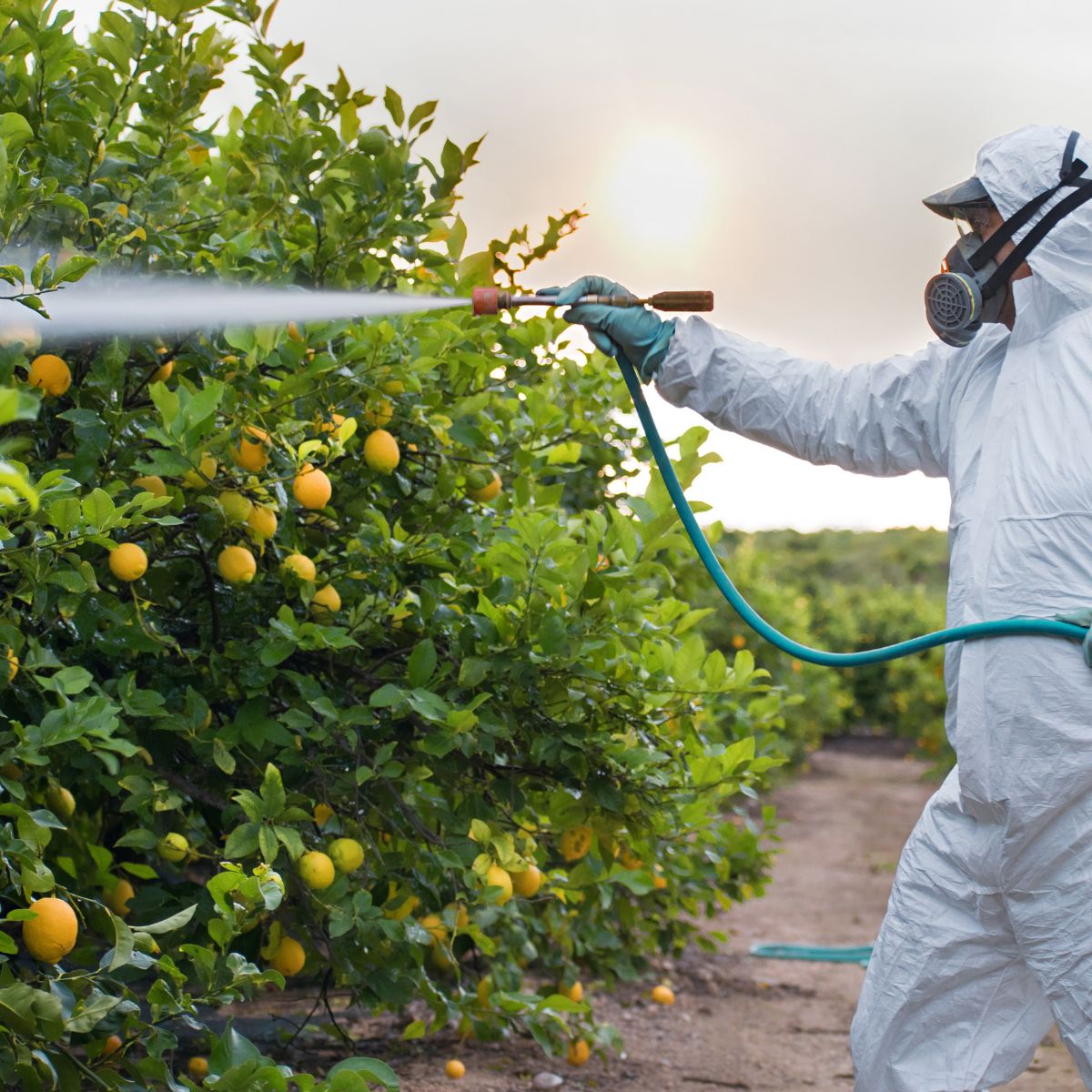

Throughout the twentieth century, humanity’s pursuit of control over nature took a sharp turn—from ancient farming practices to modern chemical warfare waged against not just human enemies but pests, weeds, and disease. The story of pesticides is not merely one of agricultural innovation; it is also a story of militarism, industrial expansion, ecological upheaval, and a conflicted relationship with the natural world.
Pest control has ancient roots. The first signs of humans controlling pests date to more than 70,000 years ago, and ancient Sumerians were known to use sulfur compounds as early as 2500 BCE to protect their crops.[1] Other ancient civilizations, including the Greeks and Romans, employed arsenic, oils, and extracts from natural plants like tobacco or chrysanthemum to deter insects. These early methods were based on observation and formed the foundation of what would later become pest chemistry.
With the advent of synthetic chemistry in the late nineteenth century, more potent and targeted substances began replacing natural compounds. By the early 1900s, farmers were using lead arsenate and copper-based fungicides, such as the Bordeaux mixture still in use today. While effective, these were highly toxic to humans and the environment, quickly becoming pollutants.
The pivotal shift came during and after the First and Second World Wars. The global arms race produced a surge in chemical research, and many of the substances originally designed as nerve agents or chemical weapons found postwar use in agriculture.
The most notorious example is DDT (dichlorodiphenyltrichloroethane), synthesized in 1874 but used more widely during World War II to combat the spread of malaria and typhus among troops. Its success led to widespread civilian use postwar when it was praised and advertised for its effectiveness and affordability.[2] By the 1950s, DDT was a staple in US agriculture and public health, sprayed on crops, forests, and even homes.
However, what was hailed as a miracle soon turned into an ecological disaster. By the late 1950s, scientists began documenting serious side effects. Birds, especially raptors like the bald eagle, were experiencing reproductive failure due to DDT-induced eggshell thinning. Insects were developing resistance, and residues were accumulating in soil, water, and animal tissue. The backlash culminated with Rachel Carson’s 1962 book, Silent Spring, which warned of an ecological crisis spurred by unregulated chemical use. Carson’s research helped galvanize the environmental movement and eventually led to the US banning DDT in 1972.[3] More recent reports show that health problems linked to DDT have persisted across at least three generations, affecting granddaughters of women exposed to the chemical in the 1960s. [4]

The pesticide industry didn’t retreat—it adapted. New synthetic classes were introduced, such as organophosphates and carbamates, many derived from World War II–era nerve agents. These chemicals targeted insect nervous systems and were widely used in the 1960s and 1970s.
This ushered in what scientists now call the “pesticide treadmill”—the cycle of pests developing resistance, prompting the creation of newer, often more toxic chemicals. Products like glyphosate (Roundup) and neonicotinoids became ubiquitous in the late twentieth century. And again, concerns followed: glyphosate’s links to cancer, neonics’ impacts on pollinators like bees, and the growing burden of pesticide exposure on farmworkers[5][6][7]
Meanwhile, many of these chemicals continued to originate from military research or were produced by corporations with defense contracts—further blurring the line between war and agriculture.
Many of the major players in the pesticide industry, including BASF, Bayer, Dow, and Monsanto, have deep roots in wartime chemical manufacturing. For instance, Bayer, now one of the largest agrochemical companies in the world, was part of IG Farben, a chemical conglomerate involved in producing chemical weapons during World War II with ties to Auschwitz.[8]
The legacy of using wartime innovation for agricultural dominance has raised ongoing concerns about the militarization of food systems, corporate consolidation, and the ethics of imposing control over ecosystems through force rather than practicing stewardship.
As environmental crises mount, alternative models are gaining traction. Agroecology, regenerative farming, and integrated pest management (IPM) prioritize ecological balance over chemical extermination. These methods rely on biodiversity, natural predators, soil health, and traditional ecological knowledge to manage pests with minimal or no synthetic input.
Rather than waging war on nature, these approaches suggest that resilience lies in cooperation.
The history of pesticides is inseparable from the history of war—its technologies, philosophies, and collateral damage. But if we are to shift course, we must also shift our metaphors. Pests are not enemies to annihilate but signs of imbalance. Chemicals are not neutral tools—they carry historical, ecological, and ethical weight. Nature is not an enemy to subdue but a partner to understand.
The question isn’t whether we can win the war on pests, but whether we can stop fighting long enough to build something better.
Copyright 2025 Center for Nutrition Studies. All rights reserved.